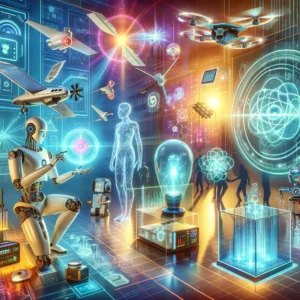The Impact of Tech on Traditional Education Systems

The Impact of Tech on Traditional Education Systems.
Technology has reshaped nearly every aspect of modern life, and education is no exception. The integration of technology into traditional education systems has revolutionized how students learn, how teachers teach, and how knowledge is accessed. This article explores the profound impact of technology on education, highlighting its benefits, challenges, and future potential.
—
The Evolution of Traditional Education
Traditional education systems, characterized by in-person teaching, textbooks, and standardized curriculums, have existed for centuries. While effective, these systems often lacked personalization and accessibility. Technology has introduced tools and resources that address these limitations, creating opportunities for more inclusive and dynamic learning experiences.
—
Benefits of Technology in Education
1. Increased Accessibility
Technology has made education accessible to millions who previously faced barriers. Online learning platforms and virtual classrooms provide opportunities for students in remote or underserved areas to access quality education.
Example: Platforms like Khan Academy and Coursera offer free and affordable courses to learners worldwide.
Alt Tag for Image: “Students attending an online class from remote locations using laptops and tablets.”

2. Personalized Learning
Through artificial intelligence (AI) and machine learning algorithms, educators can now tailor lessons to suit individual learning styles and paces. Adaptive learning software adjusts the curriculum based on the student’s progress.
Example: Tools like DreamBox and Smart Sparrow enable personalized learning experiences.
READ ALSO: How to Choose the Right Drone for Your Needs.
3. Enhanced Collaboration
Tech tools like Google Classroom, Zoom, and Microsoft Teams have redefined collaboration in education. Students and teachers can communicate, share resources, and work on group projects seamlessly.
4. Interactive Learning Experiences
Technology brings subjects to life through multimedia resources, simulations, and augmented reality (AR). For instance, AR apps allow students to explore historical sites or dissect virtual organisms, making learning immersive and fun.
5. Efficient Administration
Administrative tasks like grading, attendance, and lesson planning are now streamlined through tech solutions. This allows teachers to focus more on teaching rather than paperwork.
—
Challenges of Integrating Technology in Education
Despite its benefits, integrating technology into traditional education systems comes with challenges.
1. Digital Divide
Not all students have equal access to technology. Limited access to devices or reliable internet can create disparities in learning opportunities.
2. High Costs
The cost of acquiring and maintaining tech infrastructure can strain school budgets, particularly in developing regions.
3. Privacy and Security Concerns
With increased reliance on online platforms, protecting student data from cyber threats has become a critical issue.
4. Teacher Training
Educators must be adequately trained to use technology effectively. Without proper training, the potential of tech in education remains untapped.
—
Case Studies of Technology in Education
1. Finland’s Digital Strategy
Finland, renowned for its education system, integrates digital tools into classrooms from an early age. Their emphasis on tech literacy has prepared students for the digital economy.
2. Online Learning During the Pandemic
The COVID-19 pandemic highlighted the role of technology in ensuring continuity in education. Schools worldwide adopted virtual classrooms, making remote learning the norm.
—
The Future of Technology in Education
1. Virtual Reality (VR) and Augmented Reality (AR)
The use of VR and AR in classrooms is expected to grow, offering immersive learning experiences. For example, students might explore the solar system in a virtual space.
2. AI-Powered Learning
AI is set to revolutionize education further by providing real-time feedback, automating administrative tasks, and enabling hyper-personalized learning.
3. Blockchain in Education
Blockchain technology can securely store student records, ensuring data integrity and streamlining credential verification.
4. Gamification
Gamification techniques, such as incorporating game-like elements into learning, will make education more engaging and enjoyable for students.
—
Conclusion
The impact of technology on traditional education systems is profound and far-reaching. While it presents challenges, the benefits far outweigh them. By embracing technology, educators can create more inclusive, personalized, and effective learning environments, equipping students for the demands of the modern world.





